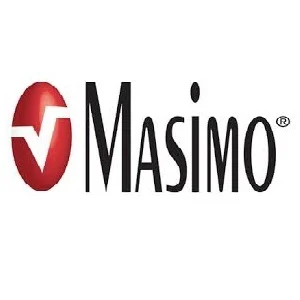Masimo announced today the limited market release of Early Warning Score (EWS) on the Root® patient monitoring and connectivity platform. EWS aggregates information from multiple vital signs and clinical observations to generate a score that represents the potential degree of patient deterioration.
Root, which works in conjunction with Radical-7® or Radius-7® Pulse CO-Oximeters® and Masimo Open Connect™ (MOC-9™) measurements, features Masimo SET® Measure-through Motion and Low Perfusion™ pulse oximetry, rainbow SET™ pulse CO-Oximetry, Nomoline™ capnography and gas monitoring, SedLine®brain function monitoring, O3™ regional oximetry, and SunTech® blood pressure and Welch Allyn®temperature monitoring. Masimo SET® helps clinicians monitor oxygen saturation and pulse rate during motion and low perfusion for more than 100 million patients a year1 and is the primary pulse oximetry technology at top hospitals, including 9 of the top 10 hospitals listed in the 2016-17 U.S. News and World Report Best Hospitals Honor Roll.2
Patient data from Radical-7 or Radius-7 and data collected using Root and other connected Masimo and third-party devices can be shared with Masimo Patient SafetyNet™*, providing hospital-wide remote monitoring and clinician notification, as well as the ability to automatically push patient data to a hospital’s Electronic Medical Record (EMR). Each time a clinician pushes data to the EMR via Root connected to Patient SafetyNet, an Early Warning Score (EWS) can now be included. Clinicians can also choose to have the standalone Root perform EWS calculations.
There are several EWS protocols, such as Pediatric Early Warning Score (PEWS), Modified Early Warning Score (MEWS), and National Early Warning Score (NEWS). These various scores require vital signs contributors – such as oxygen saturation, pulse rate, respiration rate, body temperature, and systolic blood pressure – and contributors input by clinicians, such as level of consciousness, use of supplemental oxygen, and urine output. The weighting and number of contributors differ depending upon which EWS protocol is used. Root can be customized for various predefined EWS protocols, or hospitals can configure their own set of required contributors, and their relative weights, to create an EWS unique to their care environment.
Recent peer-reviewed studies, across care areas, have suggested that the use of NEWS may have clinical benefits: Vanamali et al. notes that NEWS is a “useful simple physiological scoring system for assessment and risk management of medical emergency admissions.”3 Smith et al. found that an EWS of 5 or greater after laparotomy is associated with adverse outcomes, while recommending that future studies evaluate the ability of EWS to predict and prevent such outcomes.4
Outside the U.S., as part of the Patient SafetyNet platform, Masimo also offers Halo Index™. Whereas EWS provides a spot-check score using the NEWS standard, Halo Index presents a dynamic, cumulative trending assessment of global patient status as a single displayed number ranging from 0 to 100. Halo Index uses available Masimo parameters from connected monitoring devices, but is scalable to include additional information from the patient data repository. Masimo designed Halo Index to mimic the systematic approach that expert clinicians use in assessing patient physiologic deterioration, analyzing the patient’s history and extracting key vital sign parameter characteristics; increases in a patient’s Halo Index may indicate the need for clinicians to more closely assess the patient.
“Root, from its versatile connectivity options to its advanced patient monitoring, from rainbow® SpHb® to SET®SpO2, has long been helping hospitals improve and automate their patient care. Now, with Early Warning Score, Root can help clinicians stay ahead of the care race and transfer their patient home safely,” said Joe Kiani, Founder and CEO of Masimo.
Root with Early Warning Score (EWS) and Halo Index are not available in the U.S. EWS is a convenient aid to clinical assessment and not a substitute for clinical judgment.
*The use of the trademark Patient SafetyNet is under license from University HealthSystem Consortium.
References
- Estimate: Masimo data on file.
- http://health.usnews.com/health-care/best-hospitals/articles/best-hospitals-honor-roll-and-overviewTaenzer AH et al. Impact of Pulse Oximetry Surveillance on Rescue Events and Intensive Care Unit Transfers: A Before-And-After Concurrence Study. Anesthesiology. 2010; 112(2):282-287.
- Vanamali DR, et al. The Role of National Early Warning Score (News) in Medical Emergency-Patients in Indian Scenario: A Prospective Observational Study. Journal of Evolution of Medical and Dental Sciences. 2014; Vol. 3, Issue 13, March 31; Page: 3524-3528, DOI: 10.14260/jemds/2014/2315.
- Smith, et al. Early warning score: An indicator of adverse outcomes in postoperative patients on a gynecologic oncology service. Gynecol Oncol. 2016 Oct; 143(1):105-8. doi: 10.1016/j.ygyno.2016.08.153. Epub 2016 Aug 6.
Source & Image Credit: Masimo










